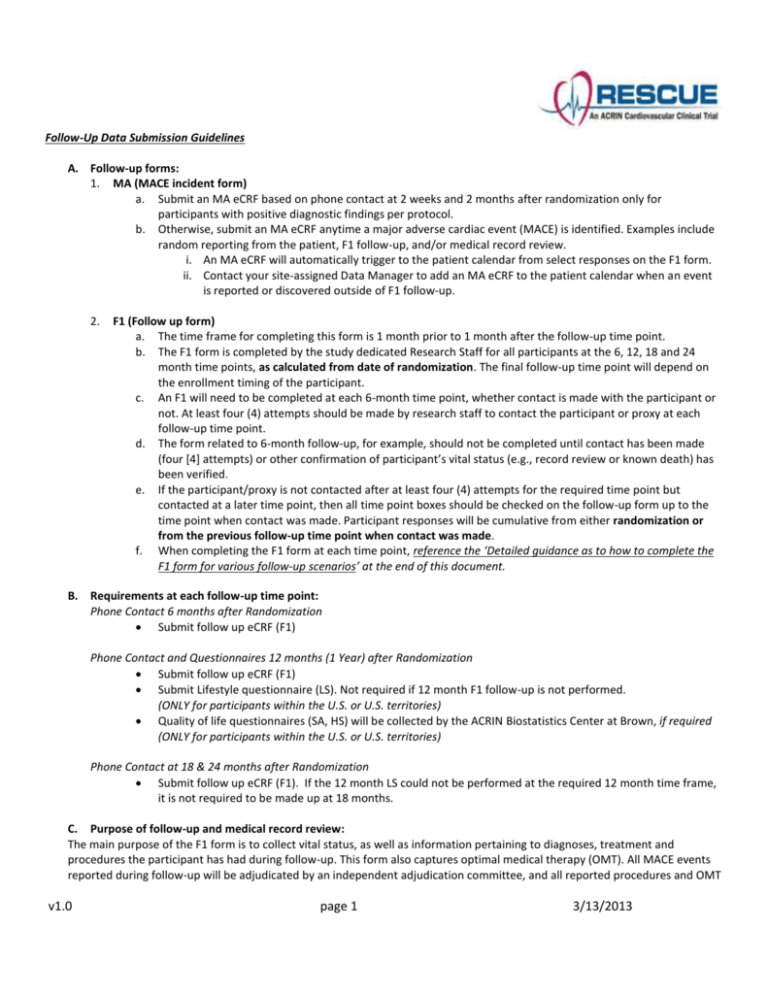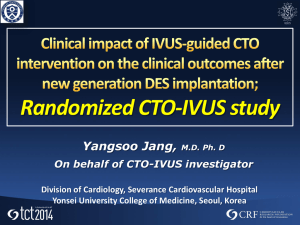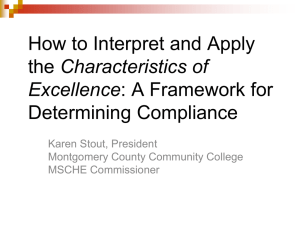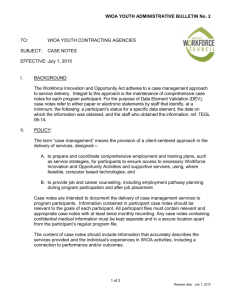RESCUE: Data Submission Guidelines for Follow Up
advertisement

Follow-Up Data Submission Guidelines A. Follow-up forms: 1. MA (MACE incident form) a. Submit an MA eCRF based on phone contact at 2 weeks and 2 months after randomization only for participants with positive diagnostic findings per protocol. b. Otherwise, submit an MA eCRF anytime a major adverse cardiac event (MACE) is identified. Examples include random reporting from the patient, F1 follow-up, and/or medical record review. i. An MA eCRF will automatically trigger to the patient calendar from select responses on the F1 form. ii. Contact your site-assigned Data Manager to add an MA eCRF to the patient calendar when an event is reported or discovered outside of F1 follow-up. 2. F1 (Follow up form) a. The time frame for completing this form is 1 month prior to 1 month after the follow-up time point. b. The F1 form is completed by the study dedicated Research Staff for all participants at the 6, 12, 18 and 24 month time points, as calculated from date of randomization. The final follow-up time point will depend on the enrollment timing of the participant. c. An F1 will need to be completed at each 6-month time point, whether contact is made with the participant or not. At least four (4) attempts should be made by research staff to contact the participant or proxy at each follow-up time point. d. The form related to 6-month follow-up, for example, should not be completed until contact has been made (four [4] attempts) or other confirmation of participant’s vital status (e.g., record review or known death) has been verified. e. If the participant/proxy is not contacted after at least four (4) attempts for the required time point but contacted at a later time point, then all time point boxes should be checked on the follow-up form up to the time point when contact was made. Participant responses will be cumulative from either randomization or from the previous follow-up time point when contact was made. f. When completing the F1 form at each time point, reference the ‘Detailed guidance as to how to complete the F1 form for various follow-up scenarios’ at the end of this document. B. Requirements at each follow-up time point: Phone Contact 6 months after Randomization Submit follow up eCRF (F1) Phone Contact and Questionnaires 12 months (1 Year) after Randomization Submit follow up eCRF (F1) Submit Lifestyle questionnaire (LS). Not required if 12 month F1 follow-up is not performed. (ONLY for participants within the U.S. or U.S. territories) Quality of life questionnaires (SA, HS) will be collected by the ACRIN Biostatistics Center at Brown, if required (ONLY for participants within the U.S. or U.S. territories) Phone Contact at 18 & 24 months after Randomization Submit follow up eCRF (F1). If the 12 month LS could not be performed at the required 12 month time frame, it is not required to be made up at 18 months. C. Purpose of follow-up and medical record review: The main purpose of the F1 form is to collect vital status, as well as information pertaining to diagnoses, treatment and procedures the participant has had during follow-up. This form also captures optimal medical therapy (OMT). All MACE events reported during follow-up will be adjudicated by an independent adjudication committee, and all reported procedures and OMT v1.0 page 1 3/13/2013 will be triggered for chart abstraction by an independent contractor. In the event of a reported MACE event, ACRIN will request that the site collect medical records surrounding the event, as well as prepare and send those records to ACRIN HQ. Please note that medical record review constitutes a review of any records that provide relevant information, not a lack of records. Thus, checking the site hospital system for the existence of records and discovering none are available for the follow-up time-point is not a review of medical records. A review of actual physical or electronic medical records from an ER visit, hospital admission, physician visit, etc., would meet this criterion. Thus, the absence of a medical record cannot be taken to mean the absence of an event. Detailed guidance as to how to complete the F1 form for various follow-up scenarios Participant contact If contact with the participant was established, complete the F1 form in its entirety. The “To today” date in Q2 should correspond to the date of the telephone interview with the participant. Q4 should denote the vital status as Alive. Q5 should be answered Yes. Q5a should denote the source of information as Participant. If the randomized RESCUE scan was positive (refer to protocol section 8.2.1) and the participant reports no medical contact within 6 months post-scan during the first F1 contact, please ensure that Q25a-d are completed accurately. Proxy contact If contact with a proxy was established, complete the F1 form with as much information as possible. In particular, complete section B, skip section C, and complete section D. If there are no providers to report Q21 can be left blank. The “To today” date in Q2 should correspond to the date of proxy contact. Q4 should denote the vital status. Q5 should be answered Yes. Q5a should denote the source of information as Proxy (or Proxy and Medical records if additional information was also obtained via medical record review). Medical record information exists or other vital status information is available If after at least four (4) attempts contact with the participant or a proxy could not be established, but information regarding vital status (at a minimum) was obtained via medical record review or through some other source (e.g. Legacy.com), then the following applies: Medical record information exists The “To today” date in Q2 should correspond to the date of the medical record review. The last date known alive should be reported in Q3a. Vital status in Q4 should be answered relative to the “To (today)” date in Q2. In particular, if the date last known alive is prior to the “To (today)” date in Q2, then Q4 should be answered Unknown. Q5 should be answered Yes Q5a should denote the source of information as Medical records. Complete section B, skip section C, and complete section D Q21-24. If there are no providers to report Q21 can be left blank. o NOTE: Events/procedures which are documented in the medical record should be recorded in Q6; otherwise, if an event/procedure listed in Q6 is not documented it should be answered Unsure. No medical record information exists but participant is known to be dead by other sources (e.g. Legacy.com) The “To today” date in Q2 should correspond to date the form is completed. Answer Q3=No and provide date of death in Q4. Answer Q5=No, and then skip sections B, C and D. v1.0 In the case of known death, every effort should be made to collect information on providers in Q21, particularly regarding the location/facility of death. page 2 3/13/2013 No medical record information or other vital status information is available. In the rare case that after at least four (4) attempts contact with the participant or a proxy could not be established, and no information regarding vital status can be obtained from any source, then the “To today” date in Q2 should correspond to the date the form is completed. Q3 should be answered No, Q4 Unknown, and Q5 No, with reason given in Q5b. Skip sections B, C and D. F1 submission under this context should be as a last resort, after all reasonable attempts to contact the participant and/or obtain vital status information via medical records or elsewhere have failed. v1.0 page 3 3/13/2013





